A new octopus’s garden in Western Australia

About 190km north of Perth, on the edge of the Indian Ocean, life is quiet on the windswept town jetty of Cervantes. Just one other man comes and goes with two large dogs in the back seat of his well-worn ute.
“You stuck here are ya?” the man asks.
“Sort of,” I respond, my travel plans COVID thwarted.
“I’m waiting for an engineer,” he says a little dryly. “He should have been here hours ago.”
I quickly deduce that anyone else loitering here in this less than average weather – without a fishing rod – must earn his living here.
Following an interesting conversation, I now have a 4.25am appointment with an octopus fisherman and am handed a torn piece of paper with the words ‘Mat Thompson’ scrawled upon it.
“Friday morning,” Mat says. “Don’t be late.”
Friday dawns and in the darkness, I am loaded into the back of Mat’s ute, knees tucked under my chin, my feet on top of whatever is on the back floor. I meet the deckhands, Mitch Seekander and Ed Bradfield, on the way to the beach to launch the dingy out to Intercepter, Mat’s octopus boat. It’s an hour’s steam to the first line of traps and the boat GPS system glows colourfully with hundreds of pot drop points.
Stopping for the first retrievals, the boat pitches and rolls in a ripping tide that drags the pot floats under the water and vessel, making them impossible to pull. As the sun rises and conditions ease, the deck is worked like a well-surfed wave – a hook is thrown to retrieve the trigger traps dropped on a long line with a float attached. The traps are a trigger design with a single plastic crab inside, luring the octopus into the shelter of the trap, and baiting its intelligence and keen sense of curiosity. The trap door slams closed when the octopus tries to take the imitation crab.
Transitioning from ‘shelter pots’ (that had no trap door), to trigger pots, saw annual octopus catches skyrocket from 33 tonne in 2009 to 213t in 2015. Currently, Fisheries estimate the range of 879–2261t to be sustainable.
While some pots this morning come up empty, others are laden with Western Australian common octopus (Octopus aff. tetricus) – a species said to be the world’s most tender and tastiest. On the roof of one pot an octopus has laid eggs – hundreds of thousands of them in string formations.
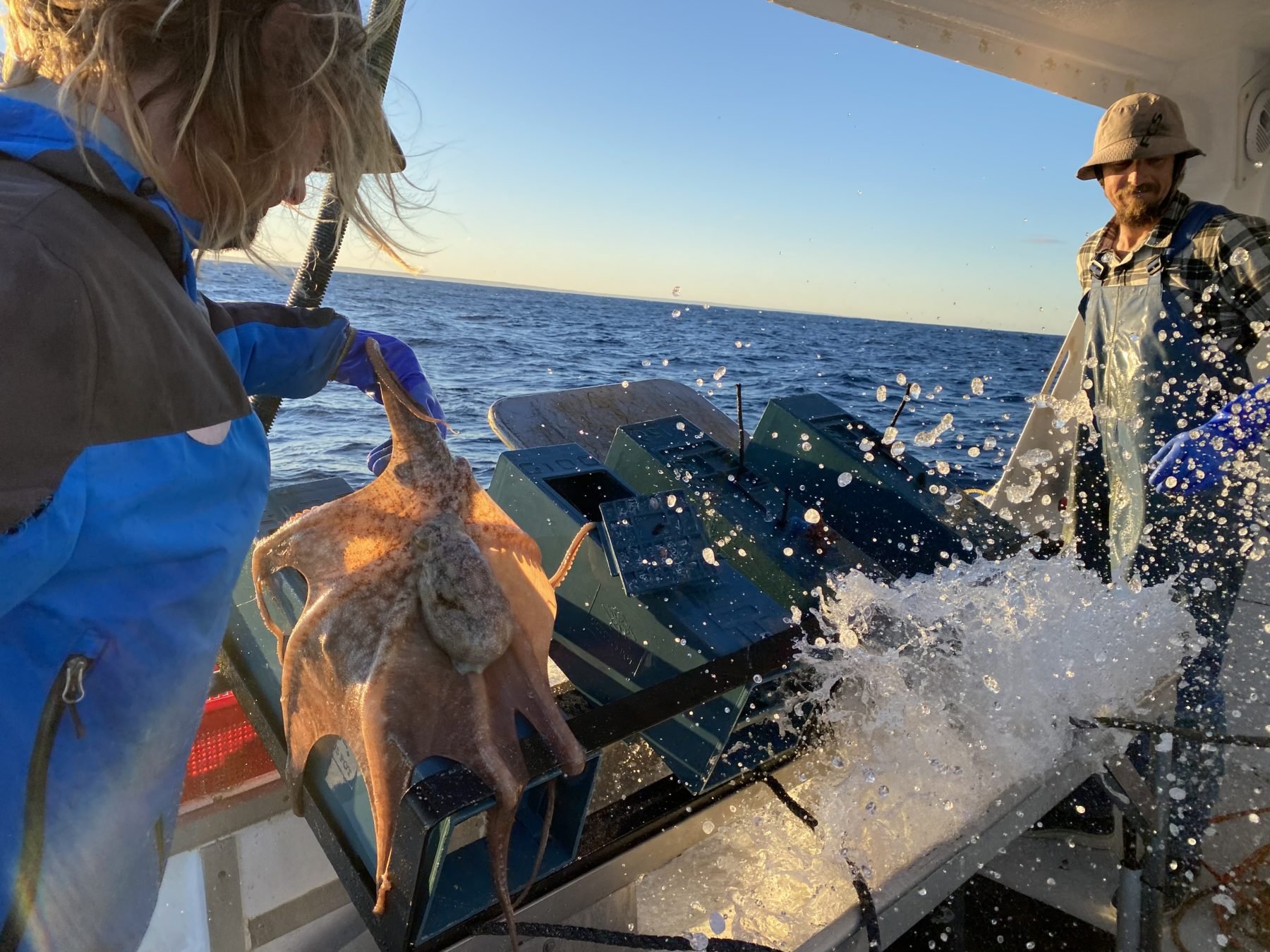
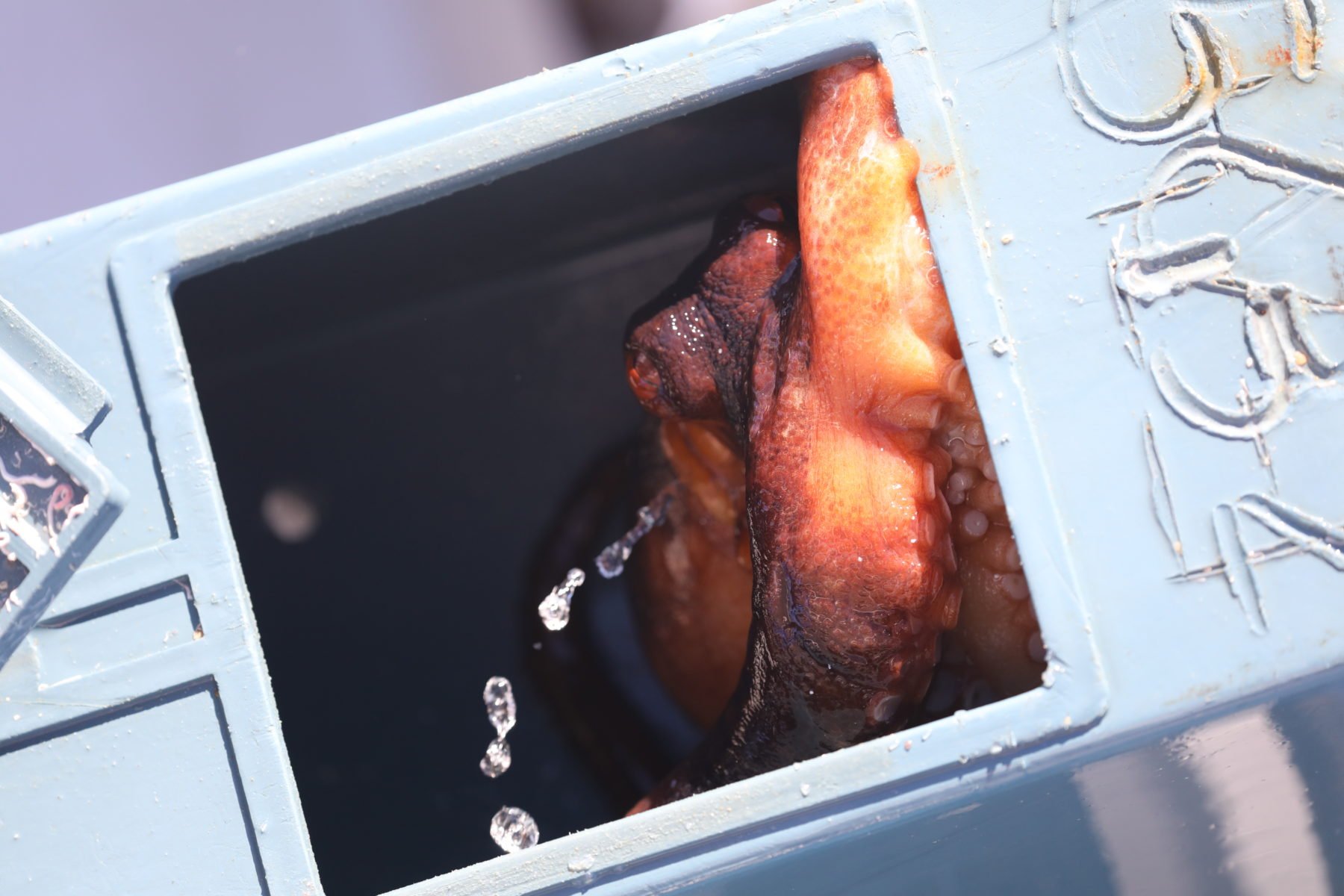
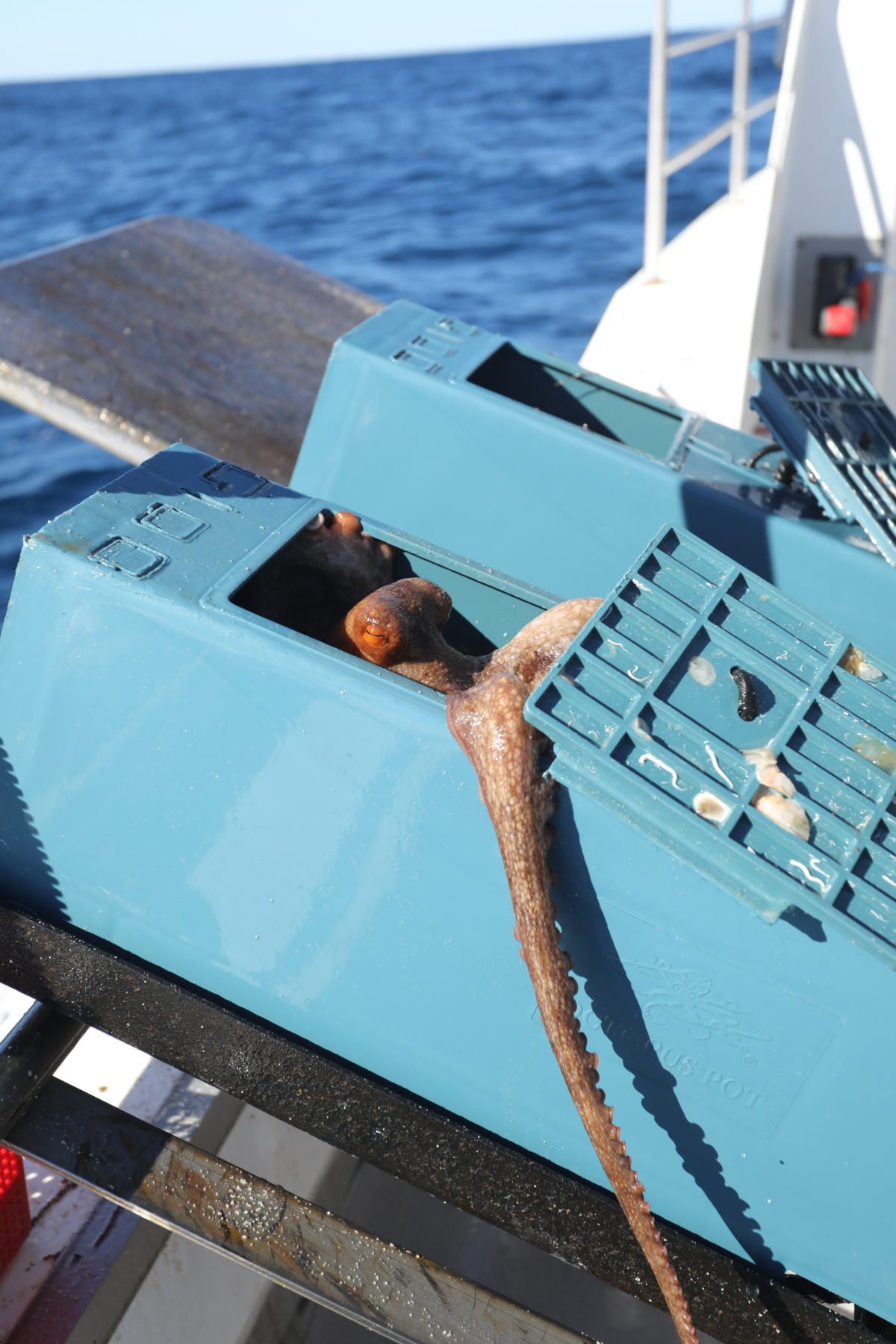

Once the octopus are removed from the pot, the head is severed quickly, just below the eyes to ensure death is swift. The tentacles are placed in an awaiting tub and the head thrown back into the sea.
“We have tried to find a use for the head,” Mat says, “but for the little bit of useable meat that it contains, it’s just not worth it. I am sure they will find a saleable use for it one day.”
Currently, the harvest strategy for the octopus resource of WA is constant – the season is open 12 months of the year and there are no ‘no-take’ restrictions in place.
The octopus trap fishing method is said to pose low risk to seabed habitats and have low levels of bycatch.
Throughout our day, apart from the common octopus, there is just one tiny blue-ringed octopus and another baby common octopus returned as bycatch.

According to Mat, his catch is sold to a processing plant in Fremantle for both human consumption and bait.
“This industry is still very young,” says Mat. “Traditionally, octopus were just considered a bycatch of the lobster industry, but there is a growing local market now, more restaurants are buying it, people are starting to love to eat it, and everyone is becoming more productive within this fishery. But we still have so much to learn. It will take me years to understand it – I may never understand it – but you have to open new doors. It might be a bad door, or it could be a good door. We have to try.”
“In the cray game for instance, I know exactly where to be within the season to catch the cray. With octopus, we are still learning. In winter we are fighting the elements. A big swell will just pick your pots up and smash them to bits, and of course whales will drag your lines, ensuring you won’t ever see them again. It’s just the way it is. My father started with one lobster boat out of a tin shack down the road – it proved to be a lucrative industry. Most of us now have children of our own that are also fishermen. I am now semi-retired and am enjoying giving the octopus industry a go.”
A quick Google of the name ‘Mat Thompson’ and I find I have stumbled upon a family dynasty of West Australian lobster fishermen, with Mat and his sons now also crossing over to include octopus fishing.
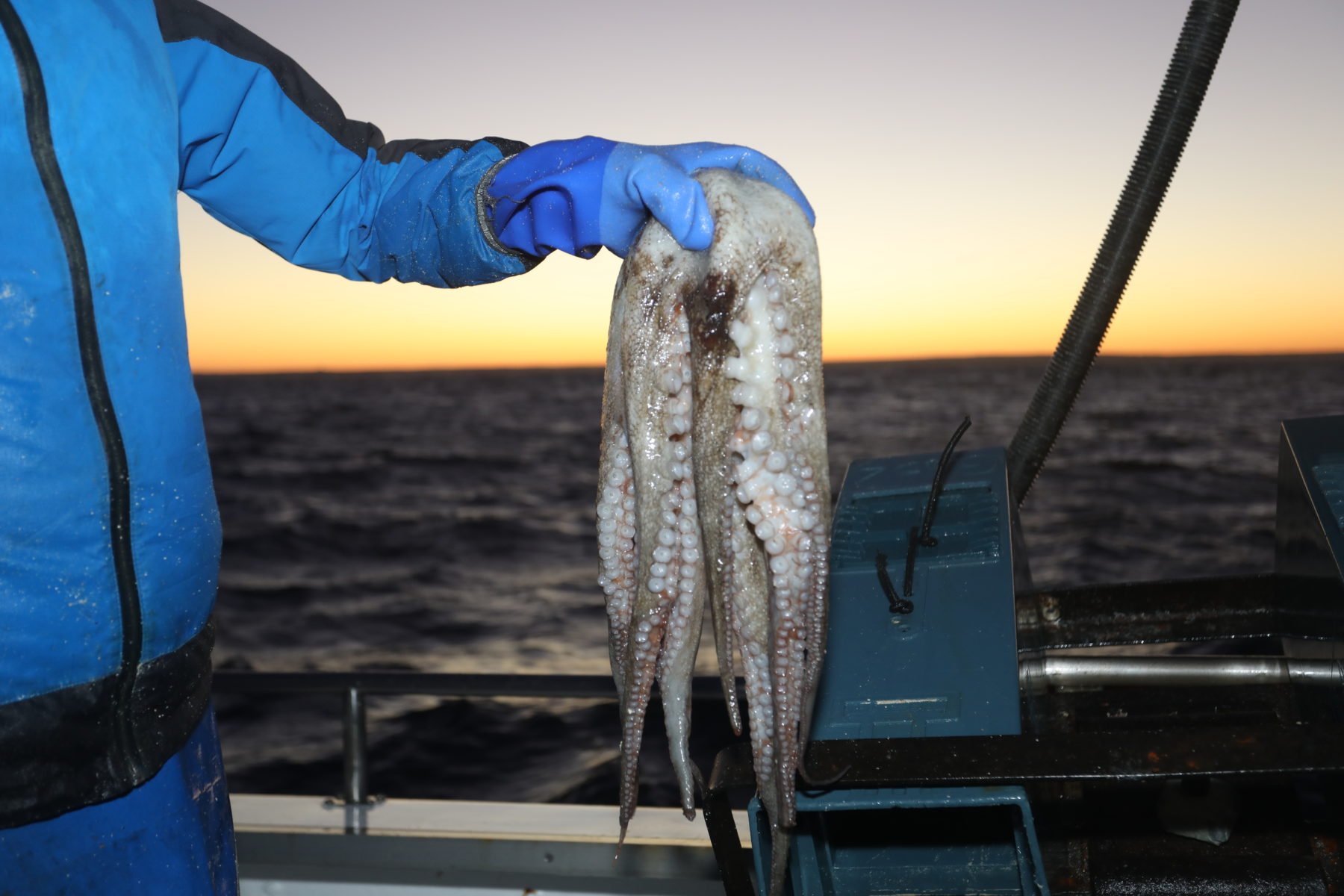
“Unfortunately, the octopus industry is not very wealthy as yet,” says Mat. “A lot more money needs to be put into the science and studies of the species, to ensure its sustainability, as it gains momentum. Our octopus is being loved worldwide and it’s important we look after the industry for tomorrow.”
Western Australia Fisheries state the biological characteristics of the common octopus means the species ‘is likely’ to have a relatively low vulnerability to fishing. It is fast growing, short lived, fast maturing with a high natural mortality and population turnover.
But there is so much we don’t know. Fishermen can’t tell if an octopus is pregnant, for instance, and currently there are no, ‘no-take’ rules or closures of the season when breeding is said to be at its height. Instead, Fisheries manage the industry using a range of input controls such as limited licenses and gear restrictions, with limits on pot allocation and spatial regulations that restrict fishers to specific zones.
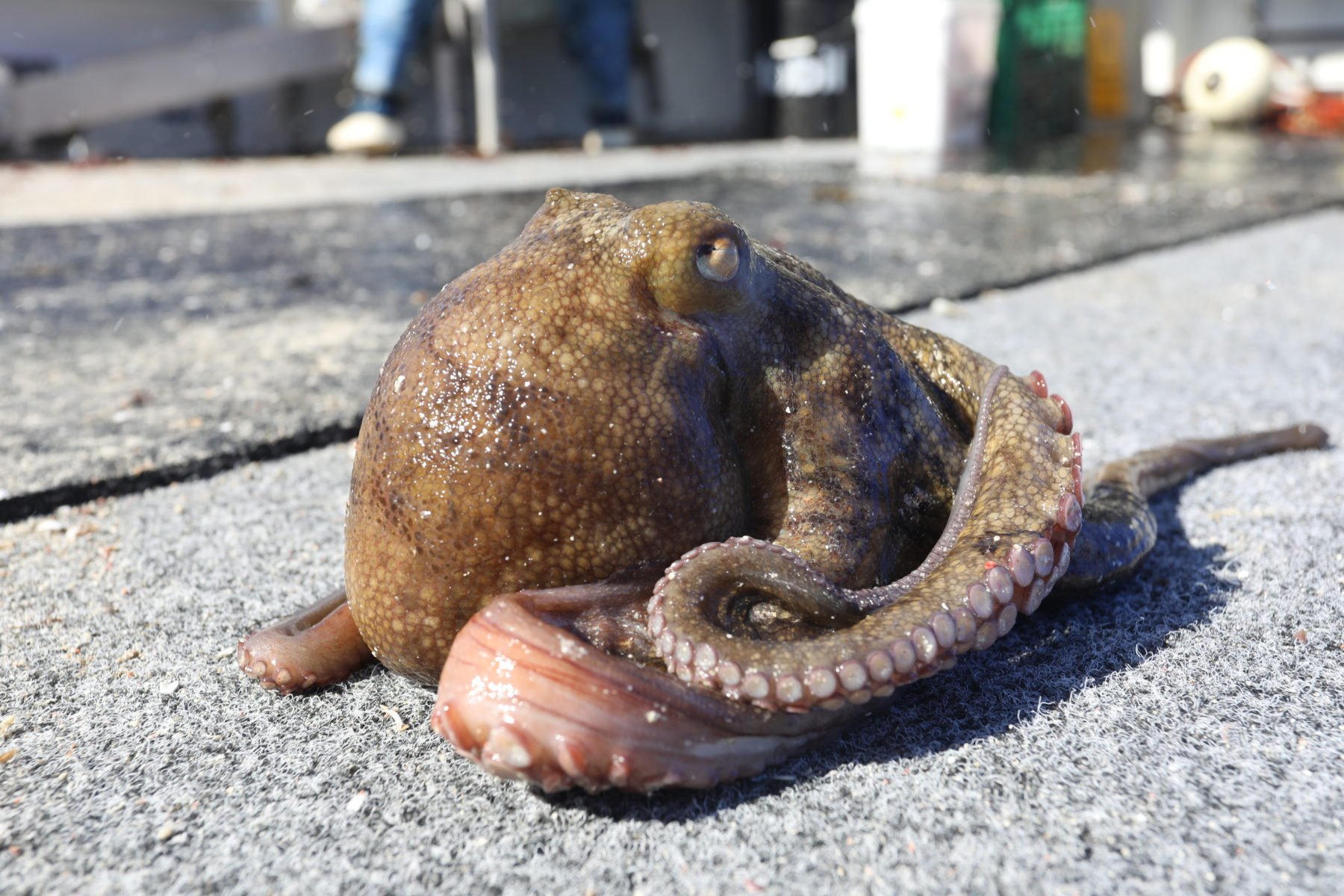
Recently, octopuses were at the forefront of everyone’s awareness with the popularity of the Oscar-winning documentary My Octopus Teacher – a heartwarming tale of a man (a filmmaker), and his relationship with a young octopus, built up over a period of 12 months.
It does not seem to have dampened our appetite for octopus, however, with chefs creating new recipes all over the world, using and enjoying, our West Australian common octopus.




